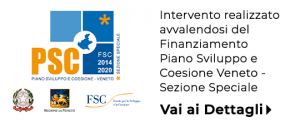An article by Mattia Gottardello, FullStack Developer in AzzurroDigitale
Cicero was born in AzzurroDigitale from the meeting between a concrete request and the desire to experiment with the new possibilities offered by artificial intelligence. The goal was ambitious: to try to use natural language models (such as Gemini, ChatGPT, LLaMA and other Large Language Models) to help people communicate with data, making the information contained in documents and databases more accessible.
A concrete need as a starting point
The project took shape from a need of F.lli Poli, a Vicenza-based company that, for over 50 years, has stood out for its technical skills in the field of design and metalworking technologies. F.lli Poli asked us to introduce within Wepladoo – already in use in their company – a functionality capable of querying company documents and databases via natural language. This use case gave us the opportunity to start giving shape to an idea that we already had in mind: building a conversational interface capable of making the search and analysis of information simpler, faster and more immediate.
How Cicero Works
Cicero integrates several AI models to process text in various formats, including .txt, .docx, .pdf and more. The accuracy and depth of the answers can vary based on the type of document and the quality of the content: in general, more organized and structured formats lead to more consistent and reliable results.
In the case of enterprise databases, Cicero works from files that describe the database structure, the meaning of the fields, and the relationships between the tables. Good data organization is essential, since the quality of the design directly affects the effectiveness of the responses generated. Cicero tries to interpret the meaning of the information to provide understandable, though not always perfect, output.
An evolving project
Cicero is a project in full evolution. LLM technology advances at great speed and every month new possibilities emerge that open up new scenarios. We are continuing to explore the limits and potential of the tool, testing new models, use cases and methods of interaction.
We can say that Cicero is on the starting line, it is getting ready to chase technologies and ideas, and it certainly represents an interesting step towards a more natural use of business data. In many contexts it can provide useful support, especially as a starting point for analysis or research activities.
Practical applications
In the industrial context, Cicero proves to be a valuable tool to simplify and speed up many daily activities. It can support operators in the rapid consultation of technical manuals, operating procedures or maintenance documentation, even when these are distributed in different formats or poorly organized. Engineers can use it to query complex design documents or compare technical specifications without having to manually browse hundreds of pages.
Another strategic aspect is the preservation and sharing of company know-how: Cicero makes knowledge historically concentrated in the hands of a few senior employees accessible to everyone, democratizing access to information. This not only improves daily operational efficiency, but also represents a powerful ally in onboarding and training processes: new employees can learn more quickly, always having precise and contextualized answers to their questions, even without the direct intervention of more experienced colleagues.
By integrating with other software in use in the factory, Cicero can also facilitate the analysis of data from production databases, helping to interpret reports, identify anomalies or monitor performance indicators (KPIs), simply by asking questions in natural language. This allows even those without advanced technical skills to access essential information for the production process in an immediate and understandable way.
Looking forward
Work on Cicero continues. We are collecting feedback, improving the user experience and trying to understand where this technology can go. As always, we start from the real needs of our customers, looking for solutions that combine innovation, concreteness and attention to the end user.
